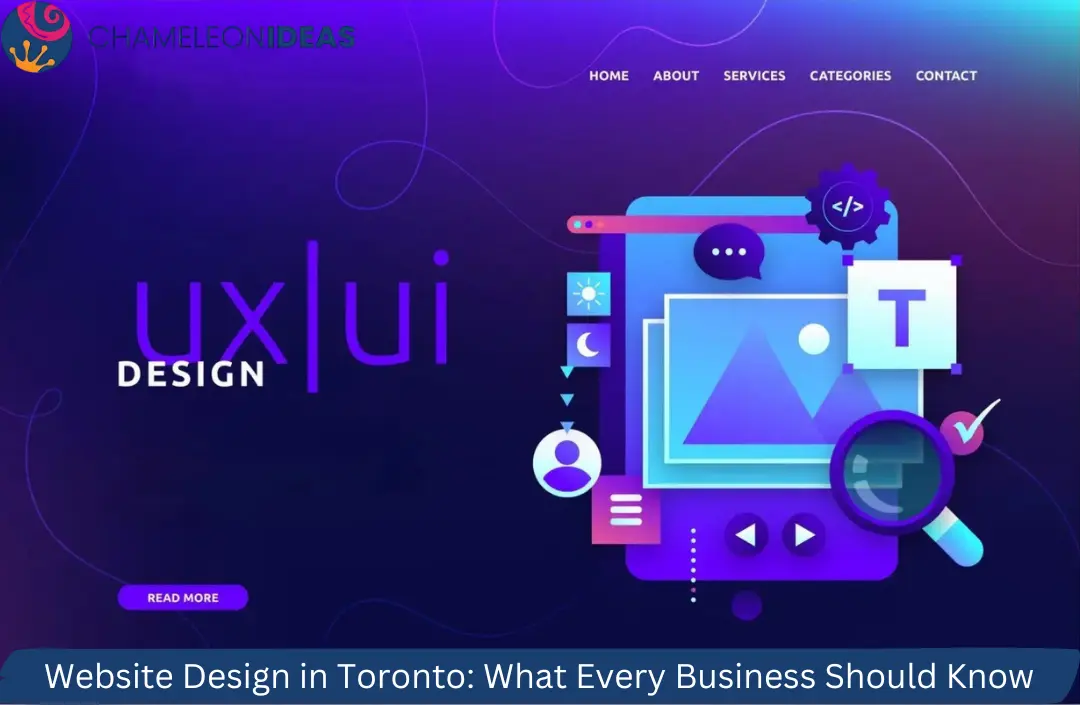
Toronto is one of Canada’s most competitive digital landscapes. Whether you’re running a downtown café, a midtown consultancy, or a suburban clinic, your website is often the first impression potential customers will have of your brand. That’s why understanding the essentials of website design in Toronto is more important now than ever.
This guide is built to help Toronto-based businesses and professionals understand what makes effective website design, how it connects to user expectations, and what local considerations matter most.
1. What Is Website Design Really About?
Website design isn’t just about making things look pretty. It involves the strategic planning, visual layout, and user experience (UX) of a site, all of which impact how users interact with your content.
Key components of website design include:
- Layout and visual hierarchy
- Color schemes and typography
- Mobile responsiveness
- UX/UI design
- Loading speed and accessibility
2. Why Website Design Matters in the Toronto Market
Toronto is home to a highly educated, tech-savvy population that expects fast, responsive, and well-organized digital experiences.
Local design expectations include:
- Bilingual or multilingual content (English, French, and others)
- Inclusive visuals that reflect cultural diversity
- Fast mobile load times for TTC commuters and mobile-first users
- Accessibility compliance with AODA standards
If your site is difficult to navigate or visually outdated, it may turn users away, costing you leads and trust.
3. Key Elements of Effective Website Design
- Navigation: Clear and intuitive menus help users find what they need without frustration.
- Visual Consistency: Colors, fonts, and layout should align with your brand identity.
- Calls to Action (CTAs): Direct users to act, whether it’s calling, booking, or buying.
- Mobile Optimization: With more than half of website traffic coming from smartphones, a mobile-friendly layout is essential.
- Fast Load Times: Pages should ideally load in under 3 seconds.
Trust Signals: Testimonials, client logos, and certifications build credibility.
4. Popular Website Design Trends in Toronto
Modern sites in Toronto often leverage:
- Minimalist design with lots of whitespace
- Dark mode toggles
- Micro-animations to guide user attention
- Full-screen video headers
- Sticky navigation and scroll-based interactions
These elements improve engagement without overwhelming the user.
5. The Role of User Experience (UX) in Design
User Experience is at the core of good design. In Toronto, where users are diverse and digitally literate, UX can make or break a conversion.
Key UX elements to consider:
- Simple and logical structure
- Consistent user flows
- Fast-loading interactive elements
- Scannable content with headings and bullet points
Think of UX as the invisible force guiding your visitor from point A to point B effortlessly.
6. Accessibility and Legal Compliance in Toronto
In Ontario, the Accessibility for Ontarians with Disabilities Act (AODA) mandates accessible digital experiences.
Design features for accessibility include:
- Alt text for images
- Keyboard navigability
- Color contrast compliance
- Text resizing and screen reader support
Non-compliance could not only hurt your traffic but result in legal penalties.
7. Website Design and SEO: Why They’re Interconnected
Design and SEO go hand-in-hand. A well-designed site is easier for both users and search engines to navigate.
Design elements that impact SEO include:
- Mobile responsiveness (affects Google rankings)
- Page load speed (affects bounce rate)
- Semantic HTML structure (helps indexing)
- Use of schema markup (enhances search snippets)
If you’re investing in SEO services in Toronto, make sure your design supports technical SEO best practices.
8. DIY vs. Professional Website Design
DIY Tools:
- Squarespace, Wix, and WordPress offer drag-and-drop options
- Good for portfolios, personal blogs, or MVPs
Professional Design:
- Required for custom functionality, e-commerce, or advanced integrations
- Offers better performance, scalability, and SEO
Toronto’s competitive industries often benefit from professionally designed, locally optimized websites.
9. Estimated Timelines for Website Design Projects
Landing page or single-page design: 1–2 weeks
Basic business website (5–7 pages): 3–6 weeks
E-commerce or custom functionality: 8–12 weeks
Include time for feedback rounds, testing, and mobile responsiveness checks.
10. How to Choose the Right Web Designer in Toronto
Ask about:
- Portfolio relevance to your industry
- Mobile and SEO optimization skills
- Post-launch support and training
- Experience with multilingual and accessible design
- Reviews and client testimonials
Good communication and process transparency are just as important as design skills.
11. Website Design in Toronto Is a Strategic Asset, Not Just a Visual One
A well-designed website communicates trust, value, and professionalism in just seconds. In a city like Toronto, where user expectations are high and competition is fierce, your website can either convert or repel visitors.
Prioritize user experience, accessibility, and SEO when designing or redesigning your site. When done right, website design in Toronto can be your strongest marketing tool.
